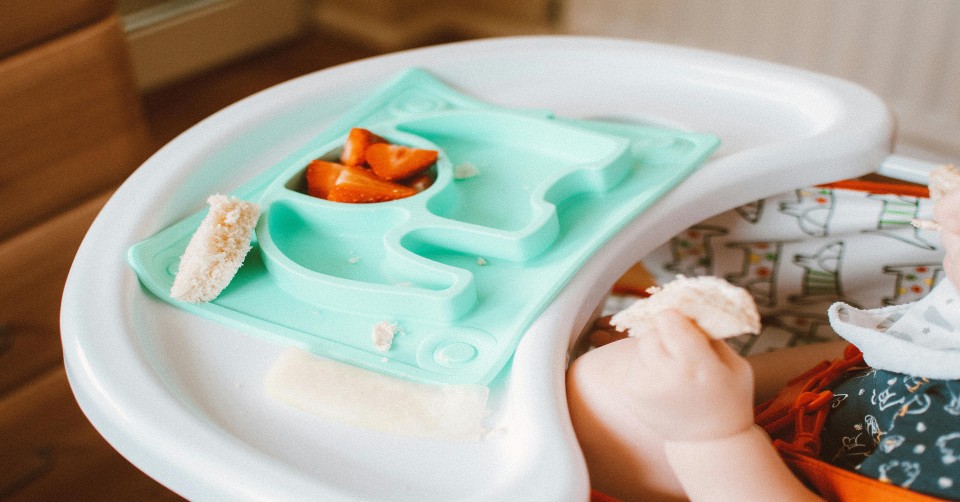Evaluation and Diagnosis
Children with Feeding Problems and Recommendations

Developing feeding skills are crucial for many reasons including basic survival, social interaction, exploration, and communication. There is nothing more troubling to a parent than a child not eating and/or growing. Feeding concerns arise from a variety of mild to severe causes. The earlier your child's concerns are addressed and recognized, the more likely secondary problems, such as behavioral and relationship problems can be avoided.
You know your child best. Have your specific concerns addressed as soon as possible for your child's well being. Keep a journal, one week or more, of what foods your child is eating and how much.
You may want to include any of the following when discussing your concerns:
-
Avoidance responses to specific foods and textures (gag response, vomiting, blocking spoon with hands or closed lips, verbal protests, pushing food away, and other avoidance responses)
-
Abnormal bowel movements (constipation, diarrhea, loose stool) and frequency
-
Skin reactions (dry patches, hives, rashes)
-
Coughing throughout meal
-
Discomfort (crying, arching back, irritability, retching)
Some feeding concerns may be minor and resolved quickly. However, other concerns may disrupt family meal routines and daily functioning, or be severe enough to impair your child's health.
What Can I Do to Help My Child With a Feeding Problem?
• Give your child multiple opportunities every day for "oral-motor" activities.
• Allow your child to explore and play with their food.
This will allow him to experience different textures through the tactile system which will ultimately help. Due to their oral hypersensitivity, they will feel "safer" exploring textures with their hands first, rather than their mouths. It is much less threatening and will lead to a better overall response.
• Grind up "real" foods; as many of the foods the family is eating as possible!
This way, they may tolerate the texture better and begin getting used to the tastes. You can also add their favorite condiment to the ground up food to make it more palatable and "smoother".
• Use a "Fresh Food Feeder" to help your child try new flavors or to introduce regular whole foods, without the risk of choking.
Simply put a piece of fruit, vegetables or meat into the mesh bag and snap shut. Your baby can chew, suck and enjoy all the whole food goodness and taste, with only the tiniest, digestible pieces coming through.
• Once you find a particularly successful food, try introducing similar foods.
For example, if your child likes a particular kind of pizza, then try; other kinds with different toppings, or another "style" (i.e., thin crust, French bread, stuffed crust etc.).
• Try providing distractions while your child is eating such as conversations, favorite stories, poems, pictures, songs, relaxing music, a toy he can hold or squeeze, or anything you can think of.
• Set up a reward system. Use tokens, reward stickers , pennies, etc.
and reward your child for trying a new food (even if your child gags or can’t eat more than one bite). Find a reward system which works for both you and your child that will encourage him to try new foods, tastes, and textures. Once you find a food, get your child to eat more of it and begin gradually adding it to the usual repertoire.
• Give your child as much control as possible.
Give your child a choice of two new foods to try. Let your child know that he only needs to eat one bite to see if he likes it. Praise your child for trying, even if it doesn't "stay down". Do this FIRST, and then your child can have his preferred meal. (It is important you do it first while your child is most hungry and while there is less food in his stomach in case he gags). Find out the best time of day for your child to try something new.
• Pay attention to textures!
Children with oral defensiveness are infamous for only being able to tolerate one or two food textures or temperatures. Make sure you try to introduce new foods to ultimately include: hot, cold, and neutral temperatures for food and drinks, pureed food, smooth, chunky, hard, soft, crunchy, "slippery", sticky, and mixed textures. If there is NO wheat allergy, you can increase and change textures by adding a 1/4 tsp. of wheat germ per 4 oz. of pureed food. If tolerated, for a few days, add another 1/4 tsp. to the same amount. If NOT tolerated (gagging, choking), wait a few days or week and try again.
• When brushing your child’s teeth, brush tongue and cheeks with just water then brush teeth normally.
Use regular or vibrating toothbrushes. Vibration is best if they will tolerate it
• If an infant or toddler, use vibrating and/or textured teething rings and toys
• Give your picky eaters free reign of the condiments.
(i.e., ketchup, mustard, mayonnaise, salad dressing, spaghetti sauce, barbecue sauce, salt, pepper, creamy soups, gravy, etc.)
Eventually you can begin fading out the condiments, using less and less, each time as he begins to get used to the food.
• Praise, Praise, Praise- use positive reinforcement!
No punishment!. If your child did more than the time before he has accomplished something. If your child played with it, smelled it, licked it, tasted it, chewed it and spit it out, or actually swallowed it (with or without gagging), then praise your child for what he did do, do not punish him for what he didn't do.
• Give your child 1/2 of a freeze pop or popsicle before they try a new food.
The cold will help "numb" and desensitize his mouth.
Guidelines for the Development of Self-Feeding Skills
Self-care skills are the basic tasks we perform every day. Self-care skills are also known as Activities of Daily Living (ADLs).
The self-care skills children learn early on are self-feeding, dressing, bathing, and grooming. Self-feeding provides a fun and easy way for a child to explore different sensory experiences and feels. This is a great opportunity for the child to play with and feel crumbly, rough, wet, squishy, spongy, and slippery textures.
Foods also provide different sounds, smells, and tastes. Self-feeding can be messy, but being allowed to be messy will help a child gain confidence, become comfortable with different textures, and develop strength and coordination in the hands and fingers.
In addition, using forks, spoons, and cups are some of the earliest opportunities for a child to learn how to use tools. Learning to use tools is important as the child grows and starts to draw with crayons, write with pencils, and cut with scissors.
A child who is practicing and learning self-feeding skills is also improving:
-
Strength in his/her back, arms, and hands.
-
Using both arms and hands together.
-
Coordination in his/her arms and hands.
-
Eye-hand coordination.
Children with impaired motor skills and/or developmental disabilities may have a harder time learning these skills. Let the child’s abilities guide the speed they acquire self-feeding skills and gradually progress from the simpler skills to more complex ones.
Games and Activities
Imitation and play can also help children develop self-feeding skills. Include the following games/activities into your child’s day to help your child learn to feed himself/herself.
-
Scoop and pour water in the bathtub using stacking or measuring cups.
-
Use a spoon to scoop marshmallows.
-
Use scoops and shovels in a sandbox.
-
Put small objects through holes into containers.
-
Play with play dough—scooping, stabbing, cutting, and pinching pieces.
-
Pretend to feed a baby doll.
-
Have imaginary tea parties, picnics, or meals
Sources:
Pre-Feeding Skills, a comprehensive resource for feeding development by Suzanne Evans Morris, PH.D., C.C.C. and Marsha Dunn Klein, M.Ed., O.T.R. http://www.arktherapeutic.com/blog/ Ark Therapeutic is a leading manufacturer of innovative therapy tools and special needs products and offers a variety of information and recommendations regarding feeding and oral motor difficulties.














